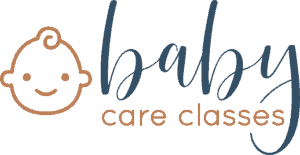Pumping 101
When talking about feeding your baby, the first things that come to mind are bottle-feeding formula, and breastfeeding. However, there is another camp of parents that pump and feed their baby bottles of breastmilk.
There are typically three reasons that parents pump and express breastmilk:
- They are exclusively pumping and bottle feeding
- They are looking to boost supply
- They are looking to offer their baby occasional bottles
1. Exclusively Pumping 101
Parents that are exclusively pumping do not put their baby to the breast at all. This may be by choice or by necessity.

The most important thing to keep track of if you are pumping to replace feedings is to pump at the same times that your baby is feeding.
If you don’t want to supplement with formula, you will still need to wake up in the night when your baby has a bottle to pump. Otherwise your body will think that your baby isn’t feeding at those times and may make less milk.
If you’re exclusively pumping it’s important to have a pump with strong suction, and maybe even a hospital grade pump.
2. Pumping to Boost Supply
Parents who are exclusively breastfeeding may notice a dip in supply at some point in their journey. This is normal! Many parents choose to drink more water, eat more calories and nurse more often to help boost supply.
However, others will integrate pumping into their routine to help increase their milk supply.

Examples on how to utilize pumping to boost supply:
- Utilize a Haaka when nursing, this will gentle encourage more flow on the side you aren’t nursing on.
- Pumping after a feeding can encourage the breasts to fully empty. We don’t recommend pumping in between feedings because then your baby may be hungry if your breasts haven’t had time to fill in between!
- Power Pumping [Read our blog to learn more]
3. Offering Occasional Bottles
We find that this is typically the model that most parents utilize when breastfeeding….and it’s the one where we get the most questions!

We love when parents can work out a sustainable mix of offering both bottle and breast to their baby, and once you’ve worked out the kinks it can be one of the easiest ways to feed a baby.
- GOLDEN RULE: Make sure that whenever your baby is having a bottle, that you are pumping at roughly the same time.
- Offer the baby a slow flow nipple and ideally paced feeding. Many lactation professionals will recommend never offering more than 4oz, but we have encountered babies who are not satiated with this amount.
- Try to match your baby’s needs to your supply. For example: If you leave every morning from 9am-1pm and your baby eats 5oz every 3 hours, then you will need to make sure you have 5oz for a caregiver to offer your baby. If you only pump 4oz, you’ll need to utilize the haaka or another pumping session during the day to store up some extra milk.
- BOTTLE FEEDING IS A SKILL: If you don’t offer your baby a bottle every other day or so then they can definitely “forget” how to use a bottle and refuse it. This can be frustrating, so if your baby takes a bottle, keep one in rotation.
Can I sleep through an overnight feeding?
Our answer is…sometimes! If you have enough milk pumped to miss a feeding, and you have support that is willing to take over a feeding for you, then we encourage you to rest. A loose rule of thumb is if you skip a feeding 1/3 of the time, and still pump or feed 2/3 of the time…then your body will still respond with the milk needed to satiate your baby. This is not from a study, but rather from our experience supporting hundreds of new parents on overnight shifts.

We are Kristin and Karina, founders of Baby Care Classes. As sleep Consultants, Newborn Care Specialists and overall baby gurus, we wanted to share our experience and knowledge with you to help you be successful in your parenting journey.
Kristin + Karina
FOUNDERS, BABY CARE CLASSES

Having a baby? Prepare with our comprehensive online baby care class!

Explore the Blog

